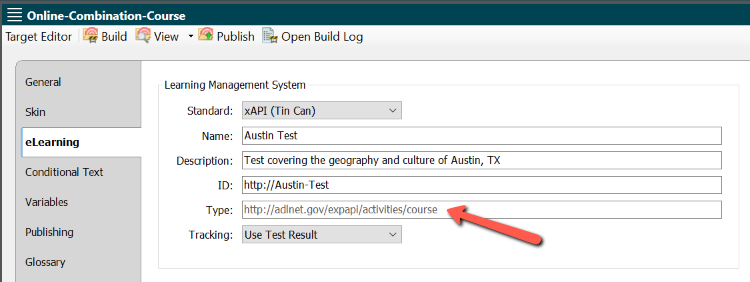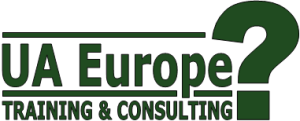If you have started using the innovative new eLearning feature in MadCap Flare 2021 r2, you will have seen that you have a choice between using a SCORM or xAPI Learning Management System (LMS)—and you may have wondered, what is the difference between these two standards? This short article explains what they have in common, some of the key differences, and which you should choose if you are just starting out with an LMS.
What is an LMS?
A Learning Management System (LMS) is a software solution that companies use to create, organise, and deliver eLearning content such as courses and assessments. Learners within the organisation can access this content using a browser, and the LMS tracks and records the performance of individual learners. The resulting data provides L&D professionals with a record of each individual's learning, and this data can be used to generate reports and provide evidence of compliance. There are many different open-source and commercial LMS platforms available, and they typically provide a range of features including:
- User management
- Course management
- Learning portals
- Personalised curricula
- Analytics and reporting
- Webinar integration
- Blended learning
- Scheduling tools
- Notifications and reminders
Most LMSs are based on a specific standard so that any course materials (potentially developed by a third party) that conform to this standard can be included and used within the LMS. The two leading and most popular standards are SCORM and xAPI (previously know as Tin Can).
What SCORM and xAPI have in common
Both SCORM and xAPI provide a standard format and API for eLearning modules, and enable a learner's access, completion, and (if appropriate) test result to be tracked and stored. In the case of both standards, the eLearning content is packaged as a ZIP archive, along with metadata such as course name and description, and a script that handles the communication between the eLearning content and the LMS.
Differences between SCORM and xAPI
SCORM is an older standard that was first developed by the US Secretary of Defense in the year 2000. SCORM 1.2 quickly followed, and the most recent version of the standard is SCORM 2004 (which is quite old!).
SCORM has served the eLearning community well over the past 20 or so years. However, partly due to its need to retain compatibility with version 1.2, it has been unable to exploit more modern software techniques. As a consequence, although it can tell you how well learners perform on a quiz in an LMS, it can't track data from today's fuller range of learning activities that includes games, social learning, mobile and offline eLearning, and real-world tasks.
That's where xAPI comes in. xAPI was created in 2013 as the next generation of SCORM but, in reality, it has an entirely different scope. Whereas SCORM focused on packaged quiz-based eLearning courses, xAPI can track any activity that you can observe or record. Examples of such activities are interacting with colleagues on social media, participating in games and simulations, and performing real-life job functions. Thus, xAPI is more suited to today's business environment where "learning happens everywhere".
Another key advantage of xAPI is that, whereas SCORM blocks cross-domain communication due to security issues, xAPI enables LMSs on different domains within the same organisation to share content or data with each other.
Here's a table that summarises the difference in features between the two standards:
SCORM |
xAPI |
|
| Completion | ✔ | ✔ |
| Time | ✔ | ✔ |
| Pass/Fail | ✔ | ✔ |
| A single score | ✔ | ✔ |
| Multiple scores | ✔ | |
| Detailed test results | ✔ | |
| Games & simulations | ✔ | |
| Informal learning | ✔ | |
| Real-world performance | ✔ | |
| Offline learning | ✔ | |
| Interactive learning | ✔ | |
| Adaptive learning | ✔ | |
| Blended learning | ✔ | |
| Long-term learning | ✔ | |
| Team-based learning | ✔ |
Which should I choose in MadCap Flare?
If you already have an LMS, then the standard that this LMS supports will dictate which option you choose on the eLearning tab in Flare's Target Editor.
From Flare's perspective, SCORM is perfectly adequate since the eLearning modules created by Flare are examples of the kind of standard quizzes that SCORM has successfully tracked for years. However, if you plan to track and report on other more diverse and less formal types of learning within your organisation, then it may make sense for you to invest in an LMS that supports the more modern and flexible xAPI standard.
The only difference between the two standards within Flare's user interface is that xAPI has one additional option over SCORM, the module Type.

You would typically enter one of the standard types defined by the US government:
http://adlnet.gov.exapi/activities/course
or
http://adlnet.gov.exapi/activities/assessment.
Conclusion
SCORM is restricted to tracking whether or not a course or test was completed, the time that was taken to complete it, and a single score or result (pass or fail). If you need to report multiple scores, detailed test results, or on-the-job learning, then xAPI is a better and more flexible option. However, both standards will do a good job of hosting and tracking eLearning content developed within MadCap Flare.
Related reading
MadCap Flare’s Help on Learning and Development
![]()
Training and Consulting in MadCap Flare
UA Europe provides specialist consulting and training (either face-to-face or via the Web) in MadCap Flare.

